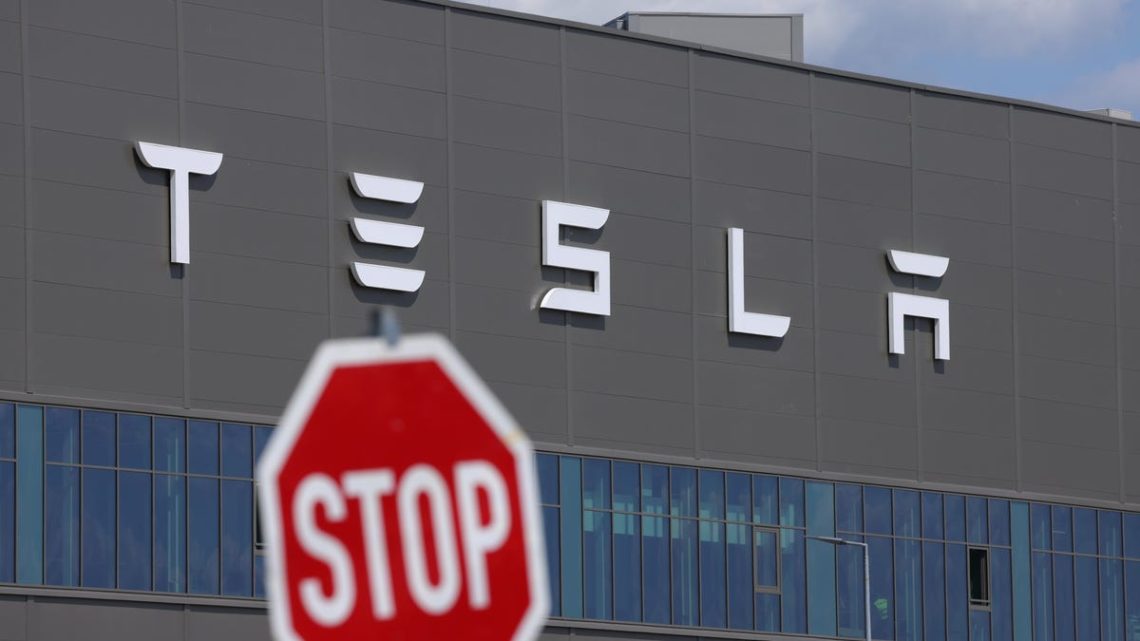Tesla’s (TSLA+1.13%) first-quarter earnings are out, and they’re not looking good for the automaker. The company’s net income sank 71%, and its earnings are a double miss in both adjusted earnings-per-share and revenue. Total auto revenue fell 20% year-over-year during the period.
The EV-maker reported $19.3 billion in revenue, which is down 9% compared with the same period last year ($21.3 billion). Net income plummeted to $409 million, or 12 cents a share, from $1.39 billion, or 41 cents a share, a year earlier.
Tesla said the drop in profits was a result of factory retooling needed to make a revamped version of its popular Model Y SUV, along with price cuts and sales incentives that put the brakes on the company’s revenue.
President Donald Trump has imposed 25% tariffs on auto imports — on top of 10% universal tariffs and tariffs on auto parts still to come. While Tesla manufactures the cars it sells in the U.S. in Texas and California, it relies on other countries for parts (Mexico supplies more than 20% of the automaker’s parts).
Tesla left a return-to-growth forecast out of its earnings report, saying it would revisit its 2025 guidance in a Q2 update.
The company said in a release, “It is difficult to measure the impacts of shifting global trade policy on the automotive and energy supply chains, our cost structure and demand for durable goods and related services. While we are making prudent investments that will set up both our vehicle and energy businesses for growth, the rate of growth this year will depend on a variety of factors, including the rate of acceleration of our autonomy efforts, production ramp at our factories and the broader macroeconomic environment.”
Tesla stock was up 1% in aftermarket trading and was settling down as the data provided people with about what they expected. The stock is down 37.3% year-to-date.
Plans for new vehicles — including more affordable models — remain on track to start production in the first half of 2025, the company announced without providing many more details. Investors had been looking forward to an announcement of vehicles that would be able to compete with lower-cost competitors (such as China’s BYD (BYDDY+2.70%)) or with Rivian (RIVN+5.19%).
“These vehicles will utilize aspects of the next generation platform as well as aspects of our current platforms and will be produced on the same manufacturing lines as our current vehicle lineup,” the company said.
Meanwhile, the Cybercab and Tesla Semi were changed to a “construction” designation, while the Roadster shifted to “design development.” And Tesla said its lithium refinery and cathode production plants in Texas are on track to start production this year.
There were a few other bright spots. Tesla’s energy business grew 67%, and the company said its Powerwall deployments crossed 1 gigawatt-hour for the first time. However, Tesla warned that tariffs could cause market volatility and affect supply and demand — the batteries that the Megapack uses have cells that are largely imported from China.
Still, the company continues to make millions each quarter selling regulatory credits — $595 million in revenue from other automakers who pay Tesla for carbon credits.
Tesla touted its AI capabilities, saying, “AI is a major pillar of growth for Tesla and the broader economy and key to our pursuit of sustainable abundance.”
Still, it’s been a bleak start to the year for the company.
In early April, Tesla reported its worst quarterly sales in years; its 336,000 delivered units were well below Wall Street’s already low expectations. Last week, data showed that the automaker’s share of California’s enormous EV market fell to 43.9% in the first quarter from 55.5% a year ago. Tesla recently pulled options to buy its Model S and X EVs from its website in China. Even used Tesla prices are plunging.
While Tesla’s shareholder deck didn’t mention CEO Elon Musk — even once — the downturn from the once-heralded company comes as his political affiliations continue to hurt the auto company.
The CEO has been the face of the Department of Government Efficiency’s cost- and job-cutting measures, and Musk has been seen at the White House (or in photo ops with the president) countless times. As a result, people looking to protest the president and his administration’s policies have found an easy target in the automaker. Nonviolent, anti-Tesla protests have popped up across the globe, while vandalism against the company’s vehicles and facilities has increased.
When reports this month suggested that Musk would be leaving his government role (his designation as a special government employee is set to expire by the end of May), Tesla’s stock rose.
The post Tesla earnings show plunging revenue as Elon Musk’s EV maker warns of hits from Trump’s tariffs appeared first on Quartz.




